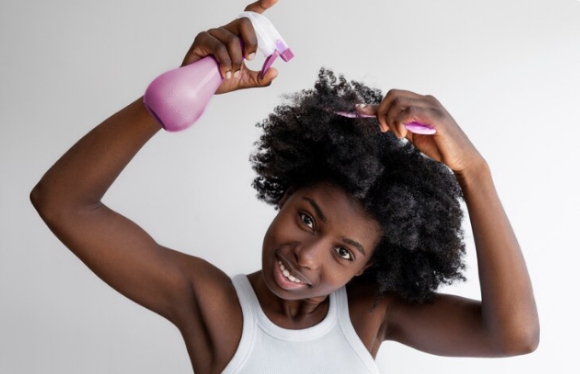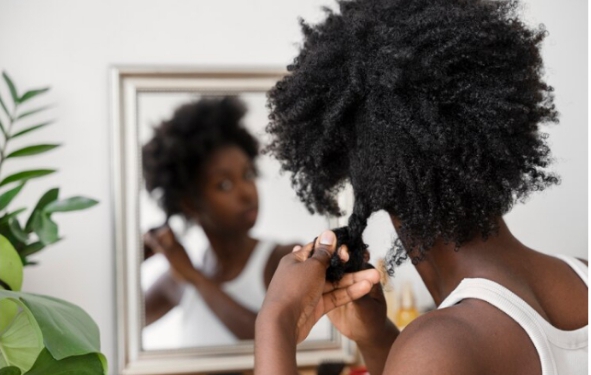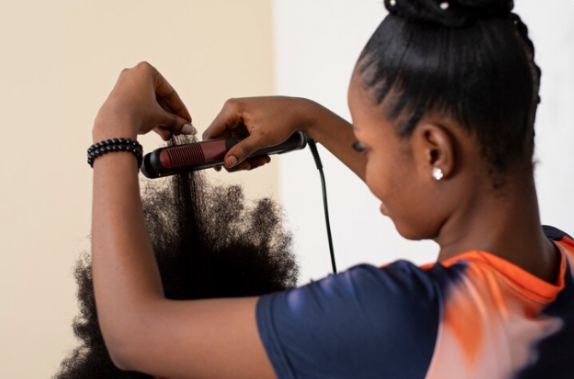For individuals with 4C hair, achieving and maintaining healthy hair can sometimes feel like a challenge due to its unique texture and curl pattern. 4C hair is tightly coiled, dense, and delicate, making it prone to breakage, dryness, and tangling. However, with the right care, 4C hair can be incredibly strong, beautiful, and versatile. The key to success lies in knowing what works best for your hair type and being consistent with your routine.
This isn’t just about following trends or using popular products. It’s about giving your hair the moisture, attention, and protection it needs on a consistent basis. If you’re serious about seeing your hair grow, stay soft, and thrive, then it starts with how you treat it day by day. Let’s talk about what really works when it comes to caring for 4C hair.
1. Moisturize, Moisturize, Moisturize

One of the defining characteristics of 4C hair is its thirst for moisture. The tightly coiled pattern of the strands makes it difficult for natural scalp oils to travel down the hair shaft, which means dryness can set in quickly if not addressed regularly. Without proper hydration, 4C hair becomes brittle, dull, and vulnerable to breakage. Moisture is not just a luxury—it is a daily necessity.
While oils and creams play a role in keeping hair soft and nourished, it all begins with water. Water is the foundation of true moisture; it penetrates the hair shaft and hydrates from within. After the hair is hydrated with water, the key is to seal that moisture in with the right combination of products. The LOC method—short for Liquid, Oil, and Cream—remains one of the most effective techniques for 4C hair. It begins with a water-based leave-in conditioner, followed by a natural oil like coconut, castor, or argan oil to seal in the moisture. A creamy, butter-based product then finishes the process, locking everything in for lasting hydration and softness.
Deep conditioning on a weekly basis is another essential step. These treatments penetrate deeper than daily moisturizers, helping to repair dryness and restore elasticity. Equally important is protecting the hair at night. Cotton pillowcases can wick moisture away, so wrapping your hair in a satin or silk scarf—or sleeping on a satin pillowcase—will help preserve hydration overnight.
2. Gentle Detangling is Key

4C hair is often prone to tangling, which can result in breakage and hair loss if not handled with care Detangling the hair properly is essential for maintaining healthy strands.
With its intricate curl pattern, 4C hair tends to knot and tangle far more quickly than other textures. This makes detangling an essential part of any 4C hair care routine. The process of detangling 4C hair requires patience and a gentle touch.
Always detangle your hair while it’s damp and conditioned to minimize breakage. Use a wide-tooth comb or your fingers to gently separate knots, working in small sections. Start from the tips and work your way up to avoid putting stress on the roots.

3. Protective Styling Is a Growth Strategy
One of the most effective ways to grow and maintain 4C hair is through protective styling. These are styles that tuck away the ends of your hair and reduce manipulation, which helps retain length over time. Options like braids, twists, cornrows, and wigs can serve as protective styles.
However, it’s crucial to avoid tight styles that pull on the edges and stress the scalp. Giving your hair breaks in between will promote healthy growth without tension or damage.
4. Embrace the Power of Scalp Care

For 4C hair, scalp care is crucial for maintaining proper hair growth and preventing issues like dandruff, dryness, and inflammation. Keep your scalp clean and free of product buildup by washing it regularly with sulfate-free shampoos. You can also massage your scalp with oils such as peppermint, rosemary or tea tree oil to improve circulation and promote healthy hair growth. Regular scalp massages can help distribute natural oils and stimulate hair follicles, leading to healthier hair growth.
5. Avoid Excessive Heat Styling

Limit the use of flat irons and blow dryers. Excessive use of them can damage the delicate strands of 4C hair, leading to dryness, breakage, and heat damage. Although it’s okay to occasionally use heat, it should never be a regular part of your routine.
Reducing heat exposure will help your hair retain length, elasticity, and its beautiful natural texture.
Conclusion
Maintaining healthy, beautiful 4C hair is entirely achievable when you understand its unique needs and commit to a consistent care routine. Though 4C hair may present challenges, success lies in providing it with proper moisture, protection, and attention. By incorporating these tips into your regimen, you can embrace your natural texture and enhance its radiance and beauty.



